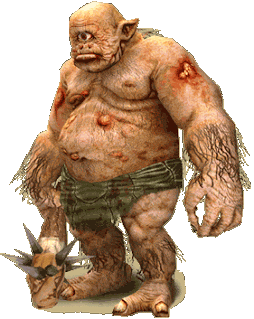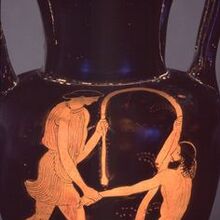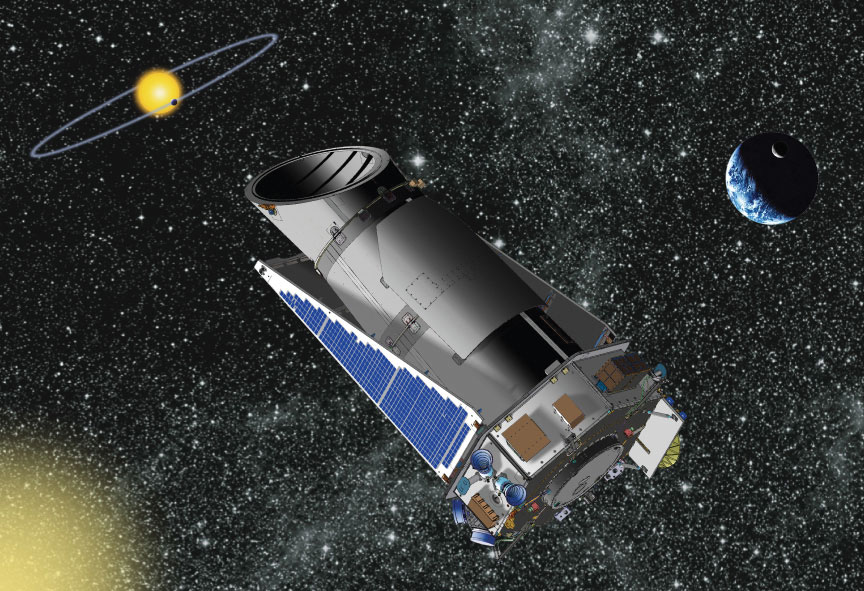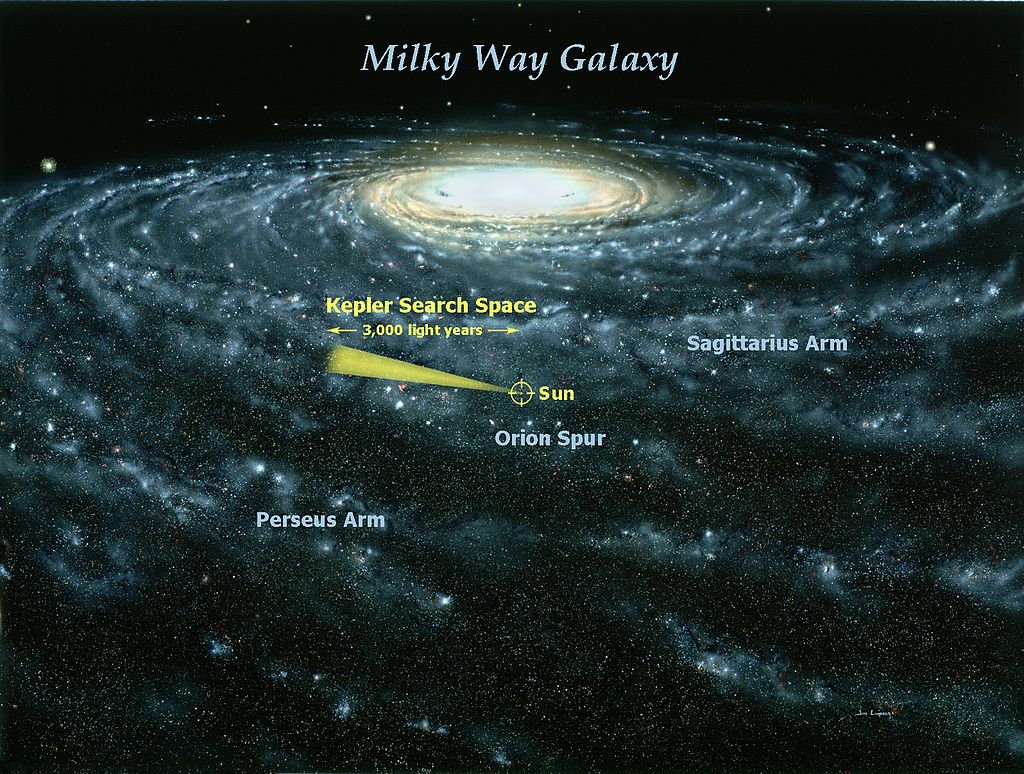Periphetes, Sinis and Procrustes: Theseus' first foes (Discretion is advised.)
Athenian King Aegeus was childless through two marriages, both of which he ended due to lack of issue. Being without an heir posed a serious problem for the king and so he consulted the Delphic Oracle for advice. The Pythian cryptically instructed him "to not loosen the wineskin" before returning to Athens. Puzzled by this dictate, Aegeus started the return trip to Athens more dejected that he had been prior to the Delphic consultation. Before reaching his home, Aegeus stopped in Troezen and visited its king Pittheus who was renowned for his wisdom. Aegeus told Pittheus about the Oracle hoping that he would understand it. Pittheus certainly did understand what the Pythian meant, but feigned ignorance. He then prepared dinner for Aegeus and during the meal plied him with as much wine as he could drink. At the dinner's conclusion, Pittheus led the intoxicated Aegeus to the bed of his daughter Aethra. That night she and the king conceived a child. The next morning, realizing that he might have sired a baby the night before, Aegeus brought Aethra to a large rock just outside of Troezen. He lifted the rock and dug a hollow below it. Within the hollow he placed a pair of sandals and a sword. After setting the rock back in place, Aegeus instructed Aethra to bring the child to the rock when he -if the baby was male- had reached maturity. 'If he can lift this rock," the king told her, "then tell him that his father is the Athenian king. He is to take the sword and sandals and travel to Athens to claim his right to become my successor." Sixteen years later, Aethra, in the company of Pittheus, took her preternaturally strong son to that very rock. She told her son, whom she had named Theseus, meaning "to set in place," to lift the rock if he could. He did so easily and exposed the sandals and sword, both of which were so well preserved they looked as though they had been set in place the night before. Aethra explained the situation to Theseus and told him he was to travel to Athens to meet his father. "I have prepared a boat to conduct you to Athens," Pittheus told him. "The land route between Troezen and Athens is rife with peril and you must avoid it at all costs." Theseus refused to travel by boat. "I shall go on foot," he announced boldly, much to his mother and grandfather's distress. They knew the wilderness passages leading to Athens teemed with robbers, murderers and bandits. They pleaded with him to change his mind, but he did not. Ever since Theseus was a young body he had heard stories of the mighty Heracles and his heroic exploits. These stories kindled in Theseus a fierce desire to become a hero of comparable strength and valor. Traveling by land afforded Theseus his first opportunity to test his mettle and confront dangerous enemies. He knew that to travel by sail would be cowardly. Realizing that the resolute young man could not be dissuaded from embarking on a land journey, Pittheus and Aethra let him go. After bowing respectfully to Pittheus and embracing his mother, Theseus eagerly ran toward the wilds leading to Athens. Not much time passed until he heard a rustling within a nearby forest grove. He bent down to see a huge and ghastly creature half concealed behind the trees. He raised himself up and strove bravely forward until the monster lunged out onto the road. The disgusted Theseus beheld a ten-foot creature with a single eye embedded in its forehead. Muscles bulged out of its blood-stained body and it wielded a large spiked bat in his right arm. Flakes of flesh and blood dripped off the weapon as the creature, named Periphetes, attacked. The monster was equally strong and vicious for he was the son of Hephaestus. Like his father, he was lame and so moved slowly. Despite this impediment Periphetes had killed many travelers with a single strike with his club. He would most certainly have killed Theseus, as well, had the young man not been agile enough to have evaded the blows. Right after the fourth attempt, Periphetes lost his balance momentarily. That slip was enough to allow Theseus to grab the club from his hands and crush the monster's skull with it. Before leaving, Theseus stooped down and with the creature's blood wrote "Θησεύς"(Theseus) on its corpse. Not long after this first deadly encounter, Theseus was approaching Corinth when he heard a shriek more horrific than he had ever heard in his life. He ran forward in time to see a fellow traveler tied to two pine trees which had been bent down together on the ground to form a "m" shape. The traveler's hands had been tied to one tree and his feet to another. Before Theseus could reach the traveler another man, named Sinis, severed the thread that held the trees in place. While Sinis laughed at the sight of the remains, Theseus bolted forward. Caught unaware, Sinis attempted to fight but was soon overpowered. Theseus tied him with twine and then bent the pine trees down to their previous position. He tied Sinis' hands to one and his feet to another before releasing the trees. He then used blood to write "Θησεύς" on each part. A while later Theseus met Procrustes, who turned out to be Sinis' father. Unlike Sinis, who appeared deranged from the beginning, Procrustes seemed quite pleasant and hospitable. He treated Theseus graciously and offered him some rest and refreshment in his home. Though on guard due to the previous two encounters, Theseus accepted Procrustes' offer and followed him inside. "Rest first," Procrustes said, pointing to a bed in the corner. "I shall prepare our dinner." Theseus approached the bed and lay on it. To his annoyance he found it too short. To his distress he then realized it was coated in blood. "Too long, I see," Procrustes whispered as he walked toward the bed, sword in hand. "We shall soon attend to that. Visitors must fit this bed precisely before napping." Procrustes brought the sword down violently onto Theseus, who swiftly drew his sword in defense. After a brief duel, Theseus disarmed Procrustes and threw the screaming man down onto the bed. "You're too long for the bed, as well," he observed. Minutes later he wrote "Θησεύς" on the truncated body and fled. These exploits, and a few more that followed during his journey to Athens, became well known to the astonished citizens of Athens and surrounding regions. Also well known, for obvious reasons, was the name of the intrepid warrior who defeated all the malevolent men and creatures in the wilds outside Athens and thus rendered it safe for all travelers. Theseus would go on to so many other heroic deeds and adventures that for generations afterwards people in Athens would say, "Nothing without Theseus."
THE DAILY ASTRONOMER
Thursday, July 16, 2020
Remote Planetarium 66: Exo-Planets III: The Kepler Mission
Yesterday we discussed the "transit" method of exo-planet detection. This technique involves studying the light curves of stars to determine the presence of any planets that might be in orbit around them. When the planet crosses the star, the star's apparent brightness diminishes. Light curve analysis can yield information pertaining to the planet's size, revolutionary period and other aspects of its orbit.
On March 7, 2009, NASA launched the Kepler Space Telescope (artistic image above), the principal function of which was to observe the light from more than 150,000 main sequence stars within a small patch of sky around the region of Cygnus the Swan. (Ultimately, the telescope observed slightly more than 530,000 stars altogether.) The objective was to detect planets through observations of the light changes resulting from planetary transits. Through the ensuing nine years, the Kepler Space Telescope detected more than 2,600 exo-planets.
The ratio of detected planets to observed stars might make one regard the mission as having been disappointing. It was nothing of the sort. We recognize that exo-planetary transits are only visible to us if the planet's orbit is seen edge on from our perspective. Very few planetary systems are so aligned. The probability of a planetary orbit being along the line of sight relative to us the ratio of a star's diameter to the diameter of the planetary orbit. The probability equals about 0.5% for any Earth size planet and 0.7% for a planet the size of Venus. This assumes the planets are traveling along orbits equal to that of Earth.
Kepler's "field of view" near the constellation Cygnus the Swan. For nine years, the Kepler Space Telescope observed more than 150,000 main sequence stars within this region. During that time, Kepler located more than 2,600 exo-planets.
The other mission objectives included determining the shape and size of the planetary orbits, the number of planets within a multiple planet system, to determine the properties of the stars harboring planets and, quite importantly, to ascertain how many of those planets follow orbits within the habitable zone of their parent stars.
Astronomers define the habitable zone or "Goldilocks orbit" as a region around a star where temperatures could be conducive to the development of life. The boundaries of this zone are determined by water, the substance that is vital to all Earth life. It is assumed that water would boil away on a planet that is too close to its parent star and be only frozen on a planet that is far away from its Sun. We know that water can sustain life only if it can exist in the liquid phase. This entire model assumes, of course, that life is as essential for extra terrestrial life as it is for Earth life.
Just a small sliver. Although 150,000 stars seems like quite a few, they represent a minuscule portion of all the stars within the Milky Way Galaxy. The image above shows the entire region the Kepler Space Telescope scanned during its nine year mission.
Although the final tally hasn't yet been tabulated, the Kepler probe detected about two dozen Earth-like planets revolving within the habitable zone of their stars. One should not infer from this statement that all these planets are necessarily life-bearing. Both Venus and Mars are technically within the Sun's habitable zone. However, by extrapolation, astronomers have estimated that within the Milky Way Galaxy alone forty billion Earth-like worlds could be revolving within their parent stars' habitable zones. That would mean that we could have 40 million life-bearing worlds in our one galaxy if only 0.1% of those planets actually had life.
Although the Kepler probe was finally "put to sleep" on November 15, 2018 (exactly 388 years after Johannes Kepler's death), it still remains the most productive planet-finder of them all. Based on its discoveries, we can safely assume that planets outnumber stars in our galaxy. Moreover, our entire cosmos could very well teem with life. We have observed the vast diversity of life on our home world. The myriad forms life assumes throughout the Universe staggers the imagination!
_______________________________________
Skywatching Tip: A Brilliant ISS fly-over!
On the early morning of July 16th, the ISS will rise at 3:43:01 a.m. in the northwestern sky. It will attain its maximum altitude of 56 degrees and its maximum brightness of magnitude -3.8 at 3:48:26 a.m. and then will set in the southeast at 3:53:49 a.m. Its passage will bring it across Hercules, through the Summer Triangle, along the southern reaches of Pegasus and along Cetus the Whale. Consult the web-page www.usm.maine.edu/planet/sky-watch-hotline to see its path against the stars. ______________________________________
To subscribe or unsubscribe from the Daily Astronomer:









